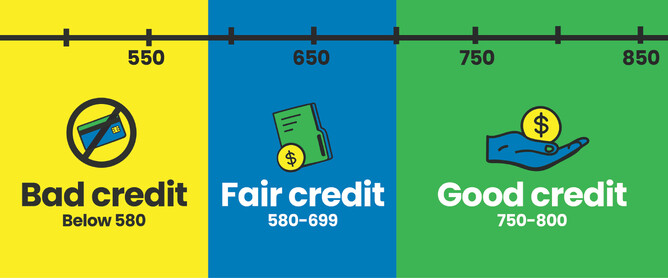Credit is how lenders decide whether or not they can trust you to pay back money you borrow. Your credit score, ranging from 300 to 850, indicates your creditworthiness.
Good credit vs. bad credit
Good credit (700-850): You manage debts well, making it easier to get loans at lower interest rates.
Fair credit (580-699): Some missed payments may occur, allowing for loan access but at higher costs.
Bad credit (below 580): Significant issues like missed payments can hinder access to loans and lead to high interest rates.
Importance of good credit
Good credit helps with:
Easier loan approval
More likely to be approved for a credit card
Better rental opportunities as prospective landlords will know you are likely to pay to your rent
Building credit
To build good credit, you need to:
Pay your bills on time.
Keep what you borrow as low as possible.
Avoid too many new debts at once.
Regularly check your credit report to make sure no-one has borrowed in your name, and that you have not lost track of what you have borrowed.
Repairing credit
To repair bad credit, you need to:
Start making payments on time.
Focus on reducing your debts.
Limit new credit applications to really essential items.
Reduce the number of credit cards you have.
Good and bad borrowing
Not all borrowing is bad. You can borrow for good, such as for a house/apartment or car.
Bad borrowing examples include if you are borrowing for a phone, holidays, Christmas or food.
In summary
Good credit is crucial for your peace of mind and living sensibly, while bad credit can complicate your life and lead to sleepless nights.
We are here to help.



